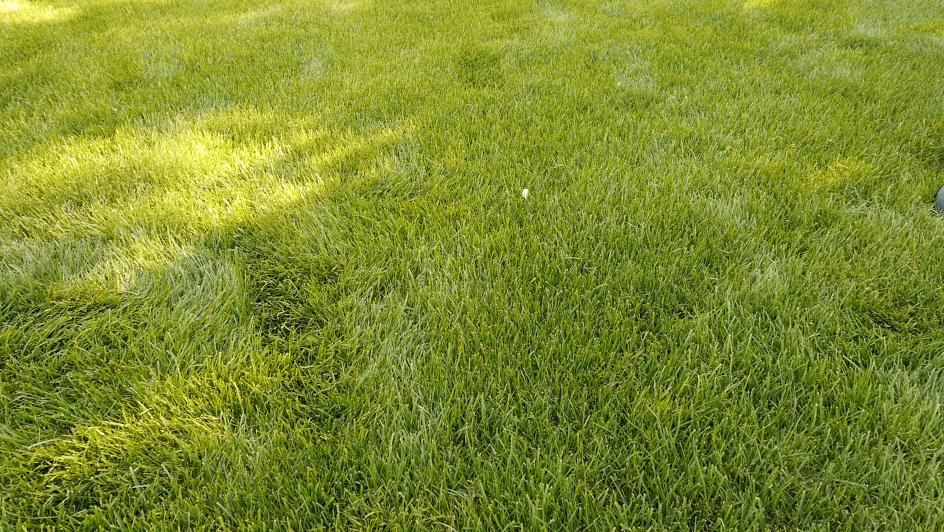
Grass lawns are known to consume lots of water, but this doesn’t necessarily have to be the case. Photo: Gingrich Horticulture Service ©2020
Known for their excessive water consumption, grass lawns tend to get a bad rap these days. However, this judgment isn’t entirely fair. The truth is most turf grasses only need about one inch of water per week to maintain their color and active growth. So, why the bad reputation? Perhaps it’s time to shift the blame from the lawns themselves to those responsible for watering them. After all, a lot of home and property owners waste water by not following efficient irrigation practices. To ensure you’re doing all you can to conserve water with your lawn, read these helpful guidelines:
- Know when (and when not) to water. Most homeowners start watering as soon as the weather starts to warm up, but there’s really no hurry. In fact, allowing your lawn to grow under mild drought stress actually increases rooting and can darken the color of the grass. You’ll know it’s time to water your lawn if you walk across it and your footprints remain (healthy leaf blades will bounce back up instead of lay flat). Of course, it’s also helpful to know when not to water. For example, by following the weather forecasts and keeping track of weekly rainfall, you can avoid waste by pausing irrigation during wet conditions.
- Water as infrequently as possible. When watering a lawn (or any plant), it’s important for moisture to reach all the way down to the roots. A lot of homeowners water in short daily spurts, but this promotes shallower root systems and weeds. A better method is watering two to three times a week for 45-minute intervals, which allows water to permeate deep into the root zone. Exceptions to this are newly seeded lawns where the surface needs to stay moist and newly sodded lawns that haven’t yet rooted into the soil.
- Water at an optimal hour. In general, the best time to water is in the morning when the lawn is wet with dew. Whereas midday watering allows for a lot of evaporation, watering early allows more water to stay in the ground where it’s needed. While nighttime watering may seem like a good idea as well, it’s actually not—by allowing moisture to cling to the grass for long periods of time, it increases the potential for lawn diseases.
- Minimize runoff in sloped areas. When irrigating a sloped lawn, you can inadvertently waste a lot of water due to runoff. As the soil becomes permeated with water, the excess will run off (typically into a nearby stream or storm drain) instead of going into the ground. That’s why if you irrigate a sloped area for 10 minutes, less than half of that water is likely to make it down to the root zone. To address this, utilize the ‘soak cycle’ method: water the area for five minutes, give it a couple of hours to soak and then water for another five minutes. This method will minimize runoff and ensure most of your water goes where you want.
- Take advantage of modern technology. Modern technology is helping conserve water in many ways, and landscape irrigation is no exception. What’s more, it can often be incorporated for an affordable cost. For example, irrigation timers enable homeowners to tailor their lawns’ watering schedules for maximum efficiency. Additionally, modern sprinkler head designs (such as rotary heads) provide improved efficiency with lawn sprinkler irrigation. You can also convert your lawn sprinklers to a drip irrigation system, although it’s important to invest in proper design and implementation. When correctly applied, subterranean drip emitter systems can sustain a lawn with minimal water consumption.
Find a Diamond Certified landscape maintenance company in your area
